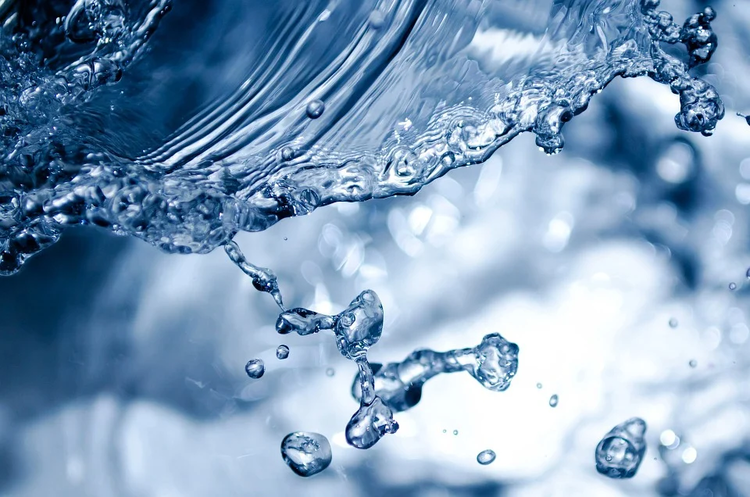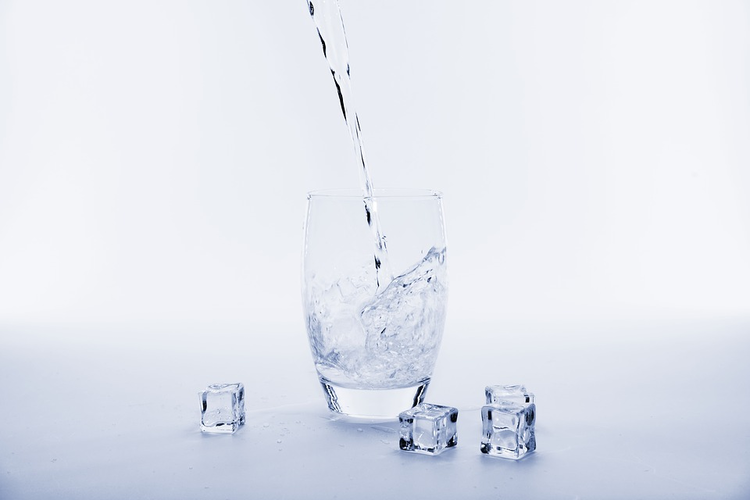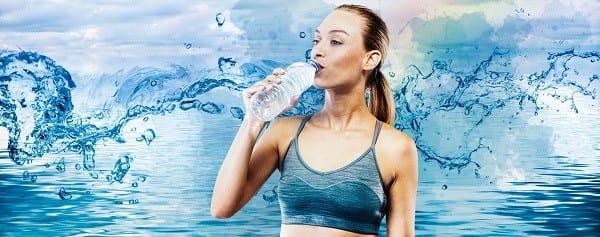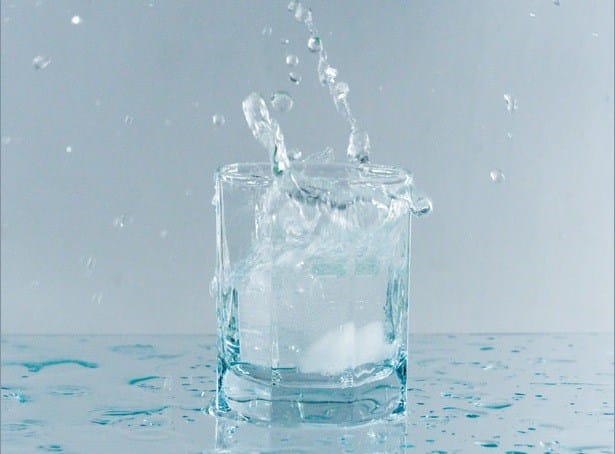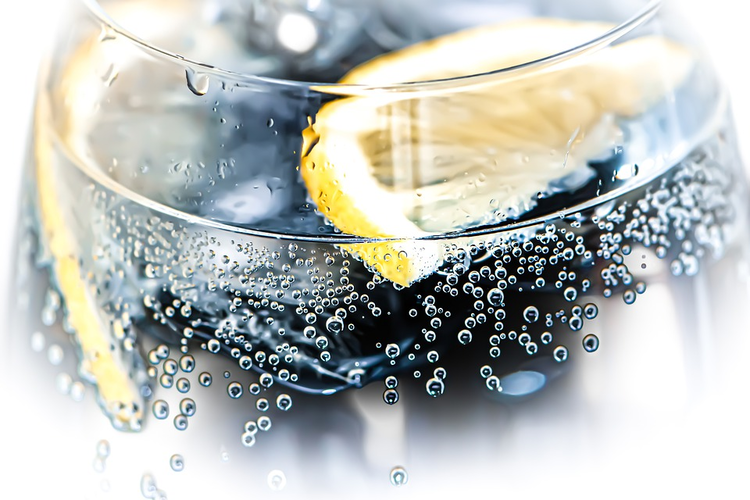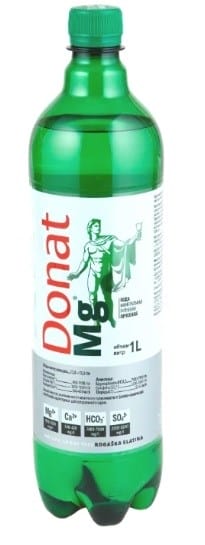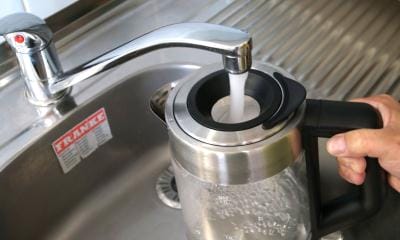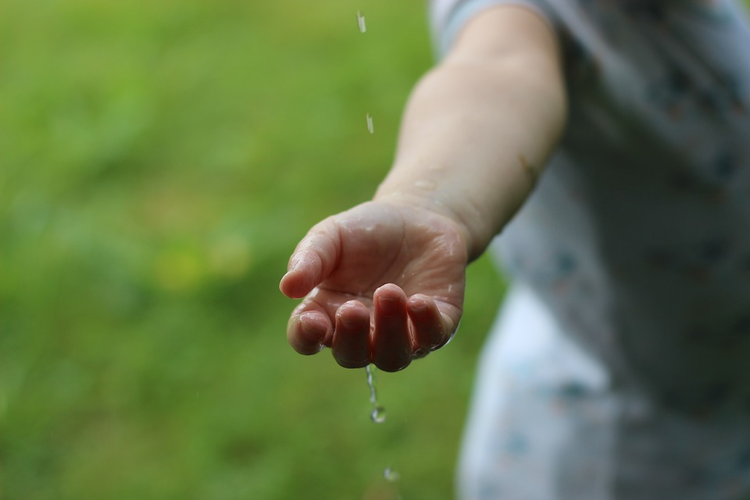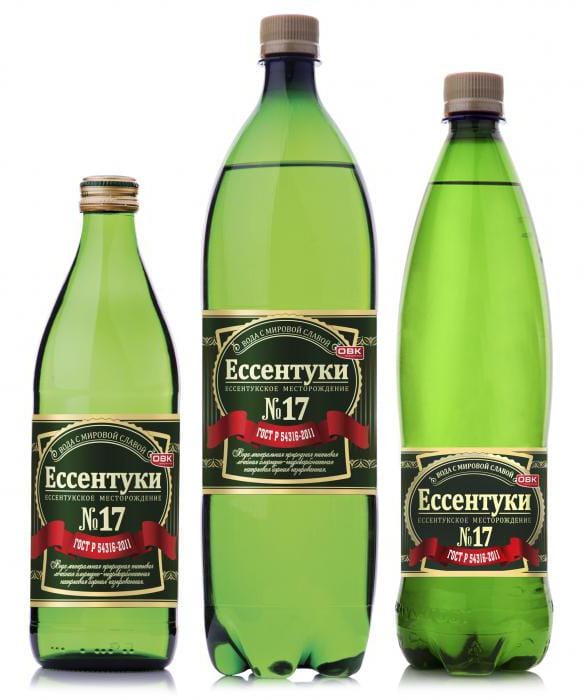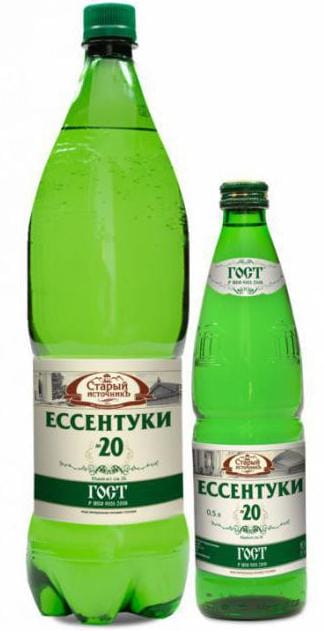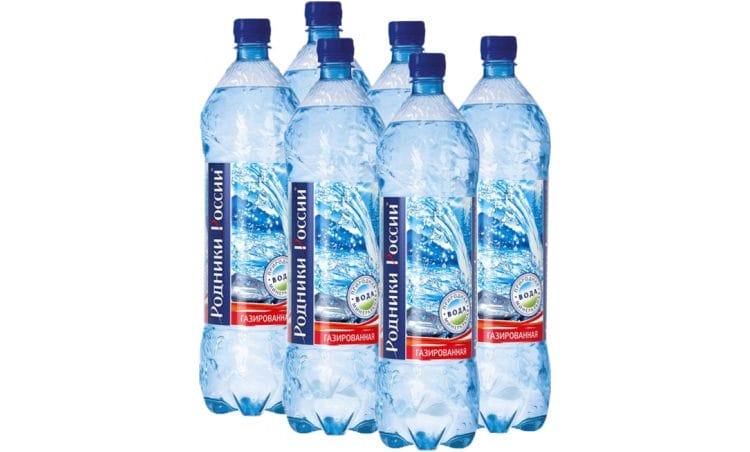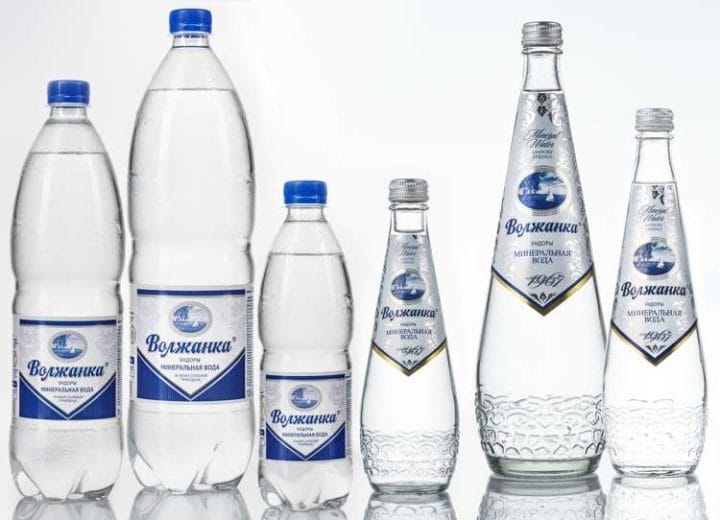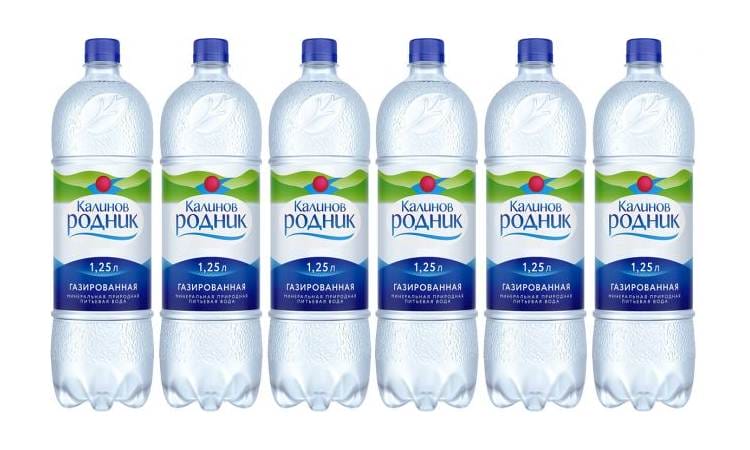What is the healthiest water? Structured water: how to prepare it? What water is best to drink for health – useful tips and tricks
What water is better to drink
Not every drinkable water can have a beneficial effect on human health and well-being. Only a balanced number of macro- and microelements in water can benefit the human body. This will ensure the water-salt and acid-base balance.
According to the WHO (World Health Organization), water that can be drunk must meet more than a hundred points. Let’s analyze the key ones.
When assessing a liquid for suitability for drinking and meeting the physiological needs of a person, the following criteria are used.
- Taste.
The chemical elements in water determine how it smells and how it tastes. The smell can be influenced by the substances that were used in water purification and the elements that were originally in it.
- Structure.
In the water used for drinking, the presence of harmful impurities – nitrates, chlorine, heavy metals, toxins, nitrites – must be excluded. The presence of living organisms (bacteria, fungi, viruses) in it is also unacceptable.
Recommended reading articles:
-
Types of water filters and their characteristics
-
How to install a water filter – helpful tips
-
How to drink water correctly: practical recommendations
Chlorine water purification or other decontamination also has an effect. Bottled or tap water often does not contain sufficient amounts of macro- and microelements.
- Mineralization.
The water contains minerals. They have a positive effect on the human body, ensuring health and increasing life expectancy. The best water for the cell is low mineralized water.
For the full functioning of the body, the water used must contain the correct combination of macro- and microelements. It should also not contain an overabundance of minerals. For example, supersaturation with salts contained in mineral water can provoke the development of kidney stones. And distilled water, which many are accustomed to drinking, without any macro- and microelements, firstly, will not bring any benefit, and secondly, it will flush useful substances from the body.
- Surface tension (ST) is the ability of water to dissolve substances and its permeability.
The surface tension level of tap or bottled water is 73 dynes / cm, the level of surface tension of body cells is 43 dynes / cm.
Surface tension tells about the degree of liquid water. The lower this indicator, the easier it is absorbed. The water inside a person is quite liquid, which contributes to the leaching of harmful elements from the body and the unhindered transportation of nutrients. It is this kind of water that can enter the cell.
- pH is a measure of the activity of hydrogen in liquid media, quantitatively expressing its acidity (weight of hydrogen).
In today’s world, most people have a pH of less than 7.0, which indicates an acidic state of the body. This is due to ecology and unbalanced nutrition. Most of the liquids that we are used to drinking and the foods that enter our body have an increased level of acidity. So, for example, sugar, flour products (premium bread), soda have pH = 3.
Scientists believe that due to increased acidity, cells begin to break down, which leads to tissue damage, the occurrence of various diseases and general aging of the body. Building cellular material does not enter cells under conditions of high acidity, therefore, the membrane is destroyed.
Interesting observation! Biochemistry scientist Otto Warburg from Germany, winner of the Nobel Prize in 1931, came to the conclusion that a lack of oxygen in cells (pH <7.0) provokes the transition of healthy cells to cancerous ones. He found that cancerous tumors do not grow in an oxygen-rich environment with a pH of 7.5 or more. This observation says that cancer develops when the acidity of the fluid rises. Its successors in the 60s of the 20th century proved that at a pH level of 7.5 or more, any disease-causing flora cannot multiply, and at such a pH, our immunity easily fights against adverse events for the body.
The answer to the question of what water is best to drink to be healthy is alkaline (pH not less than 7.5). A weakly alkaline reaction is typical for all basic living media (blood pH = 7.43, even a slight decrease in pH to 7.1 leads to death).
When neutral indicators are reached, the body is capable of self-healing.
- Oxidation-reduction potential (ORP).
The work and life of the body is carried out through the action of oxidation and reduction, which are aimed at attaching and transferring electrons.
If the ORP is positive, then there is an oxidative process without electrons. If the ORP is less than zero, then there is a recovery in the presence of electrons. Thus, water has a positive and negative charge. Water with a positive charge is dead, it takes away our energy. Negatively charged (live), on the contrary, serves as a source of energy. Based on this, it becomes clear which water is better to drink.
Indicators of measurements of parameters of some liquids
-
Melt water: ORP = +95, pH = 7.0.
-
Shungite-infused water: ORP = +250, pH = 6.0.
-
Water from the mains supply: ORP = +160 (more often ORP is higher, up to +600), pH = 4.0.
-
Boiled water: ORP = +218, pH = 4.5, after 3 hours: ORP = +465, pH = 3.7.
-
Mineral water: ORP = +250, pH = 4.6.
-
Black tea: ORP = +83, pH = 3.5
-
Green tea: ORP = +55, pH = 4.5.
-
Coca-Cola: ORP = +320, pH = 2.7.
-
Coffee: ORP = +70, pH = 5.0.
-
Coral Main water: ORP = -150 / -200, pH = 7.5 / 8.3.
-
Microhydrin, H-500: ORP = -200 / -300, pH = 7.5 / 8.5.
-
Arkhyz: ORP = +60, pH = 6.5.
-
“Benefit”: ORP = +165, pH = 5.5.
-
Essentuki-Aqua: ORP = +112, pH = 6.0.
-
Elbrus “Glacial melt water”: ORP = +130, pH = 5.5.
-
Uvina Pearl: ORP = +119, pH = 7.3.
-
Iceberg: ORP = +150, pH = 7.0.
-
Aqualine: ORP = +170, pH = 6.0.
-
“Springs of the Caucasus” Essentuki 17: ORP = +120, pH = 7.5.
-
German “Selters”: ORP = +200, pH = 7.0.
-
“Silver Falcon” from Suzdal: ORP = +144, pH = 6.5.
-
“Alpica” (in glass containers): ORP = +125, pH = 5.5.
-
“Alpica” (in a plastic container): ORP = +150, pH = 5.5.
-
Quota: OVP = +130, pH = 6.0.
-
Svetloyar: ORP = +96, pH = 6.0.
-
Belgian “SPA”: ORP = +138, pH = 5.0.
-
French “Evian” from the Alps: ORP = +85.
-
Aparan: ORP = +115, pH = 6.8.
-
Kazakhstani “Kalipsik”: ORP = +136, pH = 5.5.
-
“Volzhanka”: OVP = +125, pH = 6.0.
What is the best time to drink water
- People always have a need for water.
The norm for an adult is about 2 liters per day. This refers to water, not any liquid. Other drinks and soups will not replace water. Each person has his own norm – depending on his diseases and weight (the more weight, the more water is needed). It is important to understand not only what kind of water to drink, but also when.
- Morning glass of water.
In the morning after getting up, you need to drink 200-300 ml of water and have breakfast after 1.5 hours. This will make up for the lack of fluid, activate and flush the gastrointestinal tract system, prepare it for work. Healers of the East are convinced that drinking on an empty stomach is as important as washing and brushing your teeth.
- A glass of water before meals.
You also need to drink water 30 minutes before eating. This is done in order to start the work of the gastrointestinal tract and prepare it for work. It is especially necessary to drink before meals for people with various diseases of the gastrointestinal tract, for example, an ulcer, etc.
- Better to stay hungry than not drink.
The feeling of hunger can easily be confused with the feeling of thirst, since the person’s sensations are about the same. Many overweight people have come to this because they misinterpreted brain signals, confusing the feeling of thirst with hunger. Obesity is often a consequence of dehydration.
- After meal.
If you want to know what kind of water is better to drink during a meal, then here is the answer – you should not drink liquid at all during and immediately after eating. At least 40 minutes should pass between eating and drinking, and it is better to refrain from drinking in the next hour.
- For the night.
During sleep, the body’s water reserves are not replenished in any way. The consumption of fluid occurs when breathing or through the pores with sweat. In order for the body to have enough water for a long period of time, you need to drink water 30 minutes before bedtime. In case of violations of the kidneys from the liquid at night, you need to refuse and drink the entire volume until 17-18 hours.
- Drink whenever you feel thirsty.
You need to drink high-quality clean water, without additives and without gas.
- Before playing sports.
Water supports metabolic processes. During training, they speed up, a lot of fluid is lost through sweat. Therefore, its deficiency should not be allowed during physical exertion.
- Not just any liquid, but water.
Alcoholic drinks, coffee, tea remove fluid from the body. Therefore, drinking a cup of coffee will not replace water and will not compensate for the lack of fluid, but rather, on the contrary, will lead to it. Milk, juice, soup are food. They are also not capable of replacing water.
What happens if you drink little water
The value of water has been known for a long time. If the drinking regime is violated, diseases will begin to develop that could have been avoided if you understand what kind of water is best to drink, when and in what volume. Lack of fluid impairs the performance of the body, affecting all organs and life-supporting processes.
Deficiency of fluid in the body is manifested by the following symptoms:
-
feeling thirsty, dry mouth;
-
malfunctions of the gastrointestinal tract, constipation, increased acidity;
-
weight gain;
-
headache, migraine;
-
salt deposits;
-
sand in the kidneys;
-
the presence of sand in the gallbladder and liver;
-
vision problems;
-
fragility and dryness of hair, nails, peeling on the body;
-
crunch of joints.
Mainly, the lack of water leads to disruption of the brain, because it is 80% water. With its lack, its regulatory and cognitive abilities decrease.
According to many doctors, dehydration provokes the following diseases:
-
overweight;
-
dry cough;
-
allergic reactions;
-
bronchial asthma;
-
vision problems, cataracts;
-
cardiovascular diseases;
-
depression;
-
diabetes;
-
dementia.
If the body experiences a water deficit for a long time, the brain stops sending signals about the need for water. This is due to an excess of toxins and toxins that are not excreted from the body. Thus, the entire life support system does not work properly, which is why various diseases begin to develop.
If you drink enough water, the urine will be clear and practically free of any color or odor. Exceptions can only be when eating food or medicines with dyes. If you do not follow the drinking regime, then the urine smells, and its color becomes bright yellow. The less fluid in the body, the richer the color of the urine will be, turning to orange when severely dehydrated. In people taking diuretics, urine will also be colorless.
Lack of fluid in the body complicates the work of the kidneys, which secrete a large amount of toxic substances in conditions of water shortage. In this connection, there is no proper cleansing of the body, which leads to its intoxication, which provokes the occurrence of various diseases and a constant feeling of fatigue.
The problem of excess weight can be solved by drinking water instead of any drinks. If you refuse sugar-containing drinks (juice, soda) in favor of water, then the daily calorie content will decrease. Water instead of tea or coffee will save you from unnecessary sweets (sweets, cookies), which we are used to drinking during tea drinking. Among other things, if you follow the drinking regime, then the metabolic processes of the body are normalized, which will contribute to weight loss.
Lack of water negatively affects the activity of the cardiovascular system. According to research, people who drink 2 glasses of water a day are much more at risk of heart attack than those who drink the daily allowance.
If you follow the drinking regimen, the risk of malignant tumors such as breast, colon, and bladder cancer is also reduced.
What water is better to drink in the morning
In the morning, you need to drink water at room temperature. It is even better if the temperature of the liquid is equal to the temperature of the human body, i.e. 36 degrees. The closer the water temperature is to the human temperature, the better it will be absorbed by the body, and it will not have to spend additional energy on heating it.
Structured and natural spring water is also easier to digest. It is not difficult to make structured water – you must first freeze it and then melt it.
What is the healthiest water to drink?
If we talk about raw, then the opinions of many differ. Some believe that it is better to buy bottled, even taking into account the rating of its manufacturers. Others calmly drink what is running from the tap.
Bottled
Not a bad choice is bottled water. What it is? This is raw water that has been pre-purified industrially. It is safe to consume. It is also packaged in large bottles of 5, 10, 19 liters, etc. If we discuss the rating of bottled water, we must take into account that it can be of the first and highest category.
- The first category is tap water purified by deep purification, taken from surface water bodies.
- The highest category is purified using gentle methods, disinfected with ultraviolet light, from an artesian well.
But before buying just such a variety for the whole family, you need to clearly know what bottled water is and whether it is useful. Provided the cleaning has been carried out correctly, its benefits are undeniable and there is no need to boil it before consumption. But the reality is that many manufacturers, trying to save money, carry out certain stages of purification in bad faith. As a result, the product is often not as high-quality as the annotations on the label suggest. And often the low quality is confirmed by the test purchase.
To determine which bottled water is the best and choose a good product, you need to consider the following:
- more reliable is a manufacturing company that has been on the market for a long time;
- conscientious manufacturers use quality packaging and labels;
- A kind of “rating” of the best bottled drinking water can be found by talking to people – “popular” opinion is also important as an argument when choosing;
- to fully ensure the quality of the product, you can take it to the laboratory and order a safety and quality check.
Spring
Spring water, the benefits or harms of which are often discussed by users, undergoes natural purification, making its way through several layers of soil. In such a liquid, as a rule, there are no harmful impurities and, moreover, it is enriched with minerals, passing through the soil.
When choosing just such water for children and adults, it must be borne in mind that those springs that are located near large cities, highways or industrial enterprises are not suitable in this case, since they are not clean and safe.
But there are many springs, both widely known in certain regions, and small, but very clean, from which they take water belonging to the highest category in all respects. Some of these springs usually have official passports and are restricted from access.
You can find spring water on sale – it is also packaged and sold in bottles. But it is not uncommon for unscrupulous manufacturers to pack ordinary artesian water instead of spring water. Its benefits and harms have already been described above. But in any case, artesian water is not spring water, so you should be very careful in choosing. In addition to following the recommendations that have already been described, you need to make sure that the spring is indicated on the label where the contents of the container were taken.
Those who prefer to collect water from the spring on their own should make sure that the container is always clean. Samples should be taken periodically from the source and checked in the laboratory.
Mineral
Mineral water comes from natural sources and contains a large amount of salts and trace elements from the deep layers of the soil. As it passes through the soil, it gradually becomes mineralized. It is divided into three groups depending on the salt content in it:
- therapeutic – with a mineralization of more than 8 g / l;
- medical dining room – with a mineralization of 1-8 g / l;
- dining room – with mineralization less than 1 g / l.
What mineral water is useful for, and which mineral water is the most useful, you can understand by learning more about each of its types.
Dining room
It can be drunk without risk, since it does not have an active effect on the body. It is useful to drink such mineral water for those who have recently suffered poisoning, intoxication, acute intestinal infection. However, it is not recommended to drink it all the time. And in no case should you completely replace ordinary drinking water with mineral water. Children under 12 years old should not be given it without a doctor’s prescription.
Healing mineral
It is prescribed by a specialist, necessarily determining the dosage and period of use. Like drugs, it has both indications and contraindications. Therefore, without the appointment of a specialist, such water should not be consumed.
Medical dining room
This mineral water is also prescribed by a specialist. But later the patient himself can apply it in the same courses, adhering to previously received recommendations.
The most useful water is structured
As we managed to find out, artesian water is considered the purest. But what is the most useful water? As numerous studies and experiments have shown, melt or structured water brings the greatest benefits to the body. This is water, which has a large number of ordered groups of molecules. The spring has similar properties, with one caveat – the spring must be located several kilometers from settlements and roads.
Not everyone can boast that they drink healthy, structured water. It is appropriate here to recall Russian folk tales and references to living and dead water. Apparently, they had a real basis. So what is the difference between living and dead water?
Today, some scientists call living water precisely structured water – that water in which molecules are located in a special way. From the point of view of chemistry, any water can be considered structured, but the difference between dead (bad) water is that its structure is deformed and broken, there is practically no symmetry in it. In living, or structured, water, the molecules are arranged symmetrically, in the form of six-rayed crystals. This is confirmed by numerous scientific studies.
What is the use of structured water?
Another question arises. And what is the use of structured water, why is it more useful than ordinary artesian water?
As you know, the human body is about 70% water. The water that is contained in our body is strictly structured. The ordered structure of its molecules is necessary for the normal course of all the most important biological processes.
Thus, structured water is the most bioavailable, that is, the body does not need to spend energy on changing its structure, which means it is the most useful water.
Separately, I would like to note that the structure of water is quite changeable; it can change under the influence of various sounds and emotions. Currently, there is a lot of research on this topic around the world.
How to get structured melt water at home?
To obtain water with an ordered structure, it is better to take an enameled dish with a lid (to protect it from foreign odors). In it, water will not come into direct contact with the metal.
Pour clean water into a container, cover with a lid and put in the freezer. When the surface of the water is covered with a thin layer of ice, pour the unfrozen liquid into another dish.
“Heavy” water, unsuitable for drinking, became ice. We will recycle this ice. Place the remaining water back into the freezer. We are waiting for it to freeze by about 2/3. After that, the non-frozen water is encapsulated in the center of the container. It also needs to be drained. This is “light” water, which contains all the impurities.
Now you need to wait until the ice melts, and you can drink melted, structured water.
How to make water safe
Consider the available methods of water purification at home:
1 Filtration.
Filters are built into the water supply and in the form of a jug. The cleaning device is chosen after laboratory analysis of the water flowing out of the tap in the apartment. Carbon filters absorb organic matter, unpleasant odor, mechanical impurities, and cleaning devices based on ion-exchange resins replace metal ions with their harmless hydrogen ions.
2 Boiling.
Leads to the destruction of pathogens, the breakdown of chlorine, the removal of salts into the sediment. The disadvantages include the destruction of the structure, the appearance of carcinogens and an increase in the mineral sediment upon repeated heating. After each boiling, it is recommended to drain the water into another container, remove scale from the electrical appliance.
3 Defending.
The method will be effective if the water collected in the dish is left alone for at least 6 hours. During this time, chlorine vapors will evaporate, salts of heavy metals will go down, but microbes and organics will remain unchanged.
4 Crystallization by freezing.
We put a container with 1 liter of water in the freezer, closed with a lid. We follow the freezing process. As soon as the ice occupies 70% of the volume of the jar, the process is complete. We drain the unfrozen water, and thaw the ice, use it.
5 Use of activated carbon.
One tablet is enough per liter of water. After 6–8 hours, the water will become clearer, the unpleasant odor will disappear. Coal adsorbs mechanical impurities and suspensions.
6 Silver disinfection.
This method is ambiguous. Since when a coin or a silver spoon is kept in a large container for 8-10 hours, the effect of complete disinfection is not achieved. It will come when the concentration of silver ions becomes toxic to humans. The allowable rate is 0.05 mg / l.
7 Cleansing with minerals.
A silicon stone (10 g) or shuganite (100 g) is immersed in a liter of water and kept for three days. Then the liquid is poured into another dish, leaving 3-5 cm of sediment. Minerals are used many times, but with caution, as there are contraindications for use. In both cases, people with cancer or a predisposition to it should not drink water.
Hot or cold?
It is no less interesting to find out whether it is more advisable to use warm, hot or cold water.
Cold water is refreshing, better thirst quencher in hot weather. This is where its useful characteristics end. Water damage below 20 ° C includes:
- the possibility of getting sore throat;
- the body spends energy on regulating body temperature;
- the secretion of mucus increases;
- the breakdown of fats is difficult;
- the lumen of the vessels narrows;
- digestion slows down.
Cold water is also bad for the liver and gallbladder.
If you prefer cold water, do not drink in one gulp, only in small sips.
Hot water creates a feeling of satiety, speeds up metabolic reactions by a third, but creates a risk of burns and malignant tumors of the throat, esophagus, and upper respiratory tract. Harms tooth enamel, dulls taste.
And now about the benefits of warm water:
- Warm water boosts metabolism. A daily ritual in China, where the most ancient medicine and tradition is to drink warm water on an empty stomach. The liquid is absorbed immediately, without additional energy consumption. Accelerates the process of digestion, assimilation of food, removal of waste products.
- Warm water regulates sugar levels, prevents the formation of cholesterol plaques, which leaves the vascular lumen normal, and is the prevention of cardiovascular diseases.
- The heated water nourishes the skin cells, leaving them hydrated and elastic. The appearance of wrinkles and flabbiness of the dermis is postponed.
- Increases intestinal motility, relieves constipation.
- It is used for weight loss.
- Reduces the amount of mucus, cleanses the blood.
- The feeling of warmth improves mood, sets you in a friendly mood.
To the question: what to choose, warm or cold liquid, we answer, warm. It is more useful in every way.
Raw or boiled?
We will conduct a comparative analysis and find out which water is healthier than boiled or raw.
- A boiled liquid is called a liquid heated to a state of bubbling, in which bubbles form on the surface, splashing. During the heating process, harmful microorganisms are destroyed, except for those that are particularly resistant to high temperatures. Chlorine breaks down to form harmful compounds. Salts precipitate, the oxygen content is partially reduced, the structure of water molecules changes. Boiled water is dead. After a day, such a liquid becomes a favorable environment for the reproduction of microbes.
- Raw water is structured, enriched with oxygen and minerals. Easily penetrates tissue cells and performs its functions in full.
Raw water is called living water, as it benefits the body. The presence of microbes, nitrates, chlorine, pesticides, salts of heavy metals in tap water harms the body, leads to diseases, and therefore requires cleaning. Filtered, thawed, bottled, artesian and mineral drink without boiling.
If there is a choice of which water to prefer, boiled or raw, choose the second option. If you trust boiling more, then use settled water, do not reheat and do not use the next day.
Types of raw water and their benefits for the body
- Artesian water is extracted from a well, which is drilled to a depth of at least 100 meters. The composition of such a liquid is not affected by precipitation, groundwater, there are no bacteria or other organic matter in it. But it is impossible to use such water without preliminary analysis and purification. This is due to the possible excess content of iron, salts leached from limestone, and other minerals, depending on the area.
- Spring water is useful if it is located in ecologically clean areas away from cities so that sewage does not get into the aquifer underground layer. On the territory of Russia there are springs that have a sanitary passport and are protected by the state. It is not recommended to drink it from an unfamiliar spring without laboratory studies of water samples.
- Well water comes from shallow ground layers that contain excess iron, sulfates, nitrates. Wastewater gets into them, pathogens develop. Such a liquid requires sanitary inspection and boiling.
- Bottled water is the most popular. You don’t have to go far to get it. All you have to do is go to the grocery store and choose your favorite brand. Water is purified by industrial methods, it is divided into the highest and the first category. The first type is extracted from artesian wells, and the first category fluid is extracted from surface ground aquifers. Water is also bottled from springs, which should be reflected on the label.
Harm and benefit: we assess objectively
Bottled water: the harms and benefits of drinking it are hotly debated. But, in fact, the debate is usually unfounded. Numerous studies confidently prove that it is bottled water that today is the only truly safe source of liquid available to humans. Poor ecology, worn-out utilities, lack of opportunities for high-quality filtration of the liquid coming from the tap – all these factors only confirm the correct choice of those who prefer bottled products. Moreover, wells and shallow wells, which were considered safe for a long time, give such a “bouquet” of violations with minimal inspection that it is simply dangerous to use the liquid coming from them without boiling.
Bottled water, reviews of which are quite controversial, still outperforms any other options for purification. And even if you buy the cheapest, but industrially purified liquid from a water supply system, its composition will be much safer than when taken from a tap. Artesian waters have no competitors in terms of quality and taste.
How the quality of bottled drinking water is determined
The quality of the water depends on the purity. The cleaner the better. As a rule, this indicator is characterized by the biochemical requirement for О₂. Here we are talking about the amount of this substance contained in the liquid. As a rule, in drinking water there are 1.5 million oxygen particles. In wastewater, this figure is 100-450 mln. It turns out that the more oxygen in the water, the more decomposable organic waste it contains.
Drinking water is also assessed according to the following criteria:
- organoleptic properties (color, taste, odor, turbidity and transparency);
- rigidity;
- degree of acidity.
The potassium and sodium salts contained in it make hard water. The acidity level can be low at more than 7, high at less than 7 and neutral at 7. Bottled drinking water can have an acidity of 7.38 to 7.42.
The quality of bottled water is clearly regulated by the sanitary and epidemiological standards of the Russian Federation and the rules of SanPiN 2.1.4.1116-02. The information in these documents makes it possible to establish what content of certain elements for water is considered to be the limiting one.
Directly the composition of mineral and water in bottles is assessed according to other documents. What should be drinking bottled water? GOST R 54316-2011 sets these parameters.
To determine how high-quality bottled drinking water is, experts use different methods:
- By the method of complex verification. It is established whether the water complies with the SanPiN norm. Bottled drinking water must be checked at all factories specializing in its production.
- By the method of abbreviated analysis. Water from plastic and glass bottles is examined at the request of consumers.
Any business that produces bottled water must operate in strict accordance with established rules and regulations. Only in this case will the liquid meet all the required parameters.
6 great benefits of bottled drinking water
- The volume of the bottles can be different – both 0.33 l and 19 l. Any person has the opportunity to take water with him on the road in a compact package or stock up on large volumes for home use or the upcoming big celebration.
- Bottled drinking water can be safely consumed, since it does not need filtration, boiling, or purification.
- Bottled drinking water is stored for 1 year. All this time, it remains of high quality, does not lose its useful and taste properties.
- Bottled drinking water has a pleasant fresh taste. Unfortunately, the ecology in big cities today leaves much to be desired. And in order to protect yourself a little from dirty air, it is useful to drink clean artesian water. This is a whole storehouse of useful elements.
- Another plus is that bottled drinking water is delivered directly to the consumer’s door. Its delivery is carried out by manufacturing firms on a regular basis, and therefore it is always available.
- Modern manufacturers offer high quality drinking water, absolutely safe, complying with all GOST and SanPin standards. Bottled drinking water is often of great benefit – if it contains micro and macro elements that allow our body to work better.
Donat Mg
This brand of mineral water is from Slovenia. Its source is called Rogaške Slatina, it has been known to the world for over a hundred years. A feature of this product is the high content of magnesium. With its help, most of the body’s functions return to normal, and it is also one of the elements that is necessary for the prevention of many diseases. And since magnesium exhibits such qualities best in a dissolved state, Donat Mg will be an excellent assistant in this matter.
It is very beneficial to consume Donat Mg during pregnancy. With its help, the expectant mother will make up for the lack of magnesium easily and simply, and the baby will be born on time and will be strong. Also, this product is very useful for losing weight, the composition of the water will help to cleanse the intestines better and easier.
Since “Donat Mg” refers to healing mineral water, you can consult your doctor about the permissible amount per day. Usually, about 300 ml per day is enough for one adult of average build. To achieve the required effect, Donat Mg should be consumed in courses of 1 month, after which take a break for the same period.
The average cost is 170 rubles.
Advantages:
- High magnesium content;
- Pleasant taste;
- Helps in the treatment of the gastrointestinal tract.
Disadvantages:
- It is not advisable to exceed the daily rate.
Legend of the Arkhyz mountains
This mineral water comes from the Karachay-Cherkess Republic. It is bottled immediately at the production site. There are special American-made bottling lines for this. A feature of this liquid is that the natural components included in the composition penetrate into the cells and have a positive effect on life processes. And these are not just words, this statement was confirmed by scientists from Pyatigorsk. Thus, if you constantly use this product, it will be easier for the body to recover.
This product contains 16 different macro and microelements, because it originates from the melted waters of the glaciers of the Caucasus. And the location of the source is popular because it is located near ancient Christian temples.
“Legend of the Arkhyz Mountains” is suitable for use by adults and children from the moment of birth. The amount of use is not limited by doctors. It should be noted that the Legend of the Arkhyz Mountains in 2010 became the best mineral water in Russia.
The Legend of Arkhyz Mountains is produced in volumes of 0.5, 1.5, 5 and 19 liters. The average cost of 5 liters of water is 280 rubles.
Advantages:
- Can be consumed from infancy;
- Contains a large number of useful compounds;
- Has no restrictions on use;
- Pleasant taste.
Disadvantages:
- Not.
Narzan
“Narzan” refers to medicinal table mineral water. Its source is the Kislovodsk deposit. A drop of this water, to be used, goes a long way from the glaciers to the source, so it passes through sands, granite, dolomite and much more. During this path, many useful elements enter the liquid, and it acquires its useful properties. Also on the way there are volcanic rocks, passing through which, “Narzan” acquire their gasification.
It is worth noting the high content of magnesium and calcium in the composition of the liquid. Thanks to this, this product has a positive effect not only on digestion, but also on the nervous system, bones and teeth. It also contains sodium and potassium, which are responsible for the metabolism and the work of muscle cells.
It should be noted that the spill occurs straight from the well. In this case, the product does not have time to react with the environment. Filling takes place in glass containers with a volume of 0.33 and 0.5 liters.
The average cost is 85 rubles.
Advantages:
- It removes thirst well;
- Natural aeration;
- Direct filling;
- It contains about 20 trace elements and minerals;
- Useful substances are quickly absorbed by the body.
Disadvantages:
- Counterfeits are common.
Borjomi
This product, which originates in the volcanic rocks of Georgia, has gained great popularity among the population. Mineralization of “Borjomi” is 5.5-7.5 g / l. On its long journey to the surface, the liquid absorbs useful elements from 60 minerals that are found in the Caucasus Mountains. It contains sodium, potassium, chloride, calcium and magnesium. Thanks to this, it can be used both for medicinal purposes and for the prevention of many diseases of the gastrointestinal tract.
I would also like to note that this source was used more than 1000 years ago. Only in those days, baths were taken with water from this source. After that, the source was forgotten for a long time, until the soldiers accidentally discovered it. So they accidentally learned about the healing properties of Borjomi. But in the early 90s the production of Borjomi had to be suspended. And since 1995, production has resumed, and at the moment the products are sold in 30 countries.
Borjomi is available in cans, plastic and glass bottles. The volume ranges from 0.33 to 1.25 liters.
The average cost is 100 rubles.
Advantages:
- Suitable for the treatment of the gastrointestinal tract;
- Can be used for inhalation;
- High content of various microelements;
- Pleasant salty taste.
Disadvantages:
- Counterfeit products are common.
Bilinska Kyselka
“Bilinska Kyselka” – mineral water, which is extracted in the north of the Czech Republic in the city of Bilina. The depth of the source is 191 meters, the temperature in it varies from 17 to 20 degrees. The spillage of water occurs without additional carbonation, as it is supplied to the territory of our country. And already here they are bottled in blue PET bottles. This provides additional protection against ultraviolet radiation, which allows for a longer shelf life of the goods. Due to the fact that the product does not undergo carbonation, it is prescribed for the treatment of gastrointestinal problems.
Bilinska Kyselka is a slightly acidic water. Mineralization is 7.5 g / l. The composition contains calcium, magnesium, lithium, as well as chlorides, fluorides and sulfates. For medicinal purposes, a small amount is allowed to be consumed by children under the age of 7 years. Adults are recommended to consume 100-200 ml 3 times a day.
The average cost is 140 rubles.
Advantages:
- Treats gastrointestinal problems;
- Not carbonated;
- Good level of mineralization;
- Helps with hangovers.
Disadvantages:
- Rarely found on sale.
The difference in boiling liquid from a column, a boiler room and a boiler
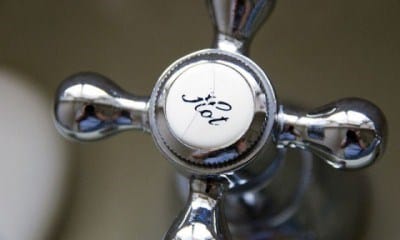 A gas water heater, a boiler, a boiler room – all these are ways of organizing an autonomous hot water supply system.
A gas water heater, a boiler, a boiler room – all these are ways of organizing an autonomous hot water supply system.
In this case, the gas water heater is flow-through heating, but the boiler can be either flow-through or storage.
In flow-through devices, water is heated while moving through a heat exchanger made of stainless steel or copper. In this case, there is less risk that harmful substances or products of corrosive processes will enter the water.
In storage equipment, and this group includes some boilers and most of the double-circuit boilers, the chance of ingress of such substances is higher due to an increase in the contact time.
Effects
It is not safe to drink hot tap liquid, even if it has been boiled. And this is due to the action of the impurities contained in it.
For man
Hot tap water may contain:
- Silifos and sodium silicates. These are reagents that make the water clear and prevent scale build-up. Siliphos contains silicates and polyphosphates. Until recently, sodium silicates were used in the food industry – for example, in the production of milk powder. Although these substances are considered relatively harmless, with prolonged use they can cause allergic reactions and exacerbation of chronic pathologies.
- Chlorine compounds. They get into the water when flushing hot water systems. Although the SanPiN standards allow the use of water with a low content of such impurities as drinking water, chlorine often causes food disorders and skin allergic reactions.
- Lead. It gets into the water from the welds of metal pipes. With prolonged use, it can accumulate in the body, which leads to diseases of the central nervous system and hypertension.
Hot tap water may contain polyacrylamide, a chemical used in cleaning reagents. It is a carcinogen, but fortunately it gets into the water in very small doses.
For a teapot
- shortening the service life of the device;
- frequent failure of the heating element in electric models;
- the appearance of limescale, which is more difficult to remove than usual.
Bleach is required
Everyone complains that tap water sometimes gives off bleach.
“Few people know that water must be chlorinated. This is the main way to fight pathogenic microorganisms that can develop in water supply systems and cause massive diseases, such as cholera, “the expert continues.
Chlorination affects the taste and smell of water (organoleptic properties), but the concentration of the element is very low – no more than 1.2 milligrams per liter, according to SanPiN 2.1.4.1074-01.
“Chlorine is used as an oxidizing agent and is quickly neutralized in contact with organics in water and food debris in the stomach,” Buzin explains.
People have heard a lot about chloramines – chlorine derivatives of ammonia. But they are not found in the water, or they see traces that are not capable of causing harm.
According to the expert, there are three ways to get rid of chlorine at home. The easiest is to stand in a container. The water can be whipped with a blender to blow out the chlorine and oxygenate it. Or boil it. However, some are afraid of this: there is a belief that boiling makes water “dead” (by the way, there is no such concept in science) or saturates it with heavy isotopes of hydrogen – deuterium and tritium.
Natural water actually contains less than a thousandth of a percent of heavy hydrogen isotopes. To increase their concentration by at least ten times, you need to boil water three hundred times more than the mass of the Earth.
The everlasting song of toughness
After taste and smell, water hardness is what worries people the most. This parameter depends on the content of calcium, magnesium and stable strontium salts. The concentration of the latter is negligible, while the other two elements are strictly controlled. You cannot exceed seven milligram equivalents per liter. By agreement with Rospotrebnadzor, up to ten is allowed. Less than one and a half is also impossible – the water becomes physiologically defective.
At a concentration of about 2.5 meq / l, calcium and magnesium carbonates precipitate, and this is normal, but scale spoils kettles, washing machines and dishwashers, which is why people buy softeners and filters.
“If the water is softened to zero, there are side effects. Those who follow a low-mineral diet, are actively involved in fitness and drink only filtered water, use diuretics or just a lot of water, may face tooth decay and the development of osteoporosis. In addition, soft water very poorly rinses off the cleaning agent from the dishes, and part of it inevitably enters the body with food, “explains Igor Buzin.
In his opinion, this should also be taken into account by users of reverse osmosis systems, from which practically distilled water comes out. To bring it closer to physiological indicators, mineralizers are needed. But few people use them and even suspect the existence of additional cartridges. With prolonged use of distilled water, heart problems are possible. Residents of mountainous regions face this – they often drink melt water, and it is very low-mineralized.
But even very hard water is not safe, Buzin warns. If a person has impaired metabolism of phosphates and oxalates, then the risk of urolithiasis and hypercalcemia – the deposition of calcium compounds on the skeleton, increases.
ARTESIAN WATER
This is water that is extracted from wells, from where it comes under pressure. Usually these are wells with a depth of at least 100 meters, drilled into aquifers protected from pollution. Therefore, bacteria and harmful chemicals that are on the surface are usually not there.
Water is purified by passing through natural filter rocks, but at the same time it is saturated with various minerals. Passing through limestone, it “collects” calcium and magnesium. And passing through other layers and ores, it is saturated with other substances that are not always useful. Most often, iron. And this is not the iron found in meat and apples. Iron in those compounds in which it is in drinking water is not absorbed by the body, but spoils the taste of water, and in large quantities can cause gastrointestinal upset.
Yuri Rakhmanin, Academician of the Russian Academy of Medical Sciences, Director of the Research Institute of Human Ecology and Environmental Hygiene named after V.I. A.N. Sysina:
“Artesian water needs careful study and detailed analysis. In some cases, when there are too many harmful substances in it, not only can it not be drunk, but even used for domestic purposes. It so happens that all the elements are normal, and one by one – an excess of 5 or even 10 times, and, of course, such water cannot be used in unlimited quantities. There are artesian springs, in which nature created physiologically high-grade water. Producers who spill water from such wells are very lucky. They only need to carry out minimal purification and treatment of the water, and that’s it – it is ready for packaging. But there are very few such sources. “
BABY WATER
A child needs more water than an adult. A growing organism needs 2-3 times more water. That is, if an adult weighing 60 kg requires 2 liters of water per day, then a three-year-old child, whose weight is 4 times less, drinks 1-1.3 liters of water per day.
What if this water contains iron, lead, arsenic and other toxic substances? They are deposited in the child’s body 2-3 times more.
The child needs special drinking water for children, in which the composition of minerals and trace elements is ideally balanced.
GLACIAL, MOUNTAIN AND MELT WATER
People have attributed life-giving power to melt water for a long time, and even in the scientific community there is an opinion that it really has special properties.
According to some reports, melt water accelerates plant growth and increases the biological activity of living organisms. When water freezes, its structure changes, and the water that forms as a result of the melting of glaciers of mountain peaks is really cleaner and more useful than, for example, water from rivers that is polluted as a result of mismanagement of humans and then disinfected with chlorine.
Classes of water of natural origin
We found that table mineral water has a certain concentration of minerals, is absolutely safe for health, suitable for daily use and has no side effects. Now it should be noted that mineral waters are different in their composition, influence on the human body and are divided into different classes.
Hydrocarbonate sulfate
It is also a mineral-organic medical dining room. Helps treat kidney disease. The most common ones are Borjomi and Narzan. Borjomi contains a number of microelements useful to the body, chlorine, sodium and a large amount of calcium, sulfur, potassium, magnesium, fluorine, boron, silicon. There is also titanium, aluminum and strontium in small proportions. In a small dose, this medicinal water even contains sulfur. Medicinal table mineral water “Narzan” has no less valuable composition. It is based on magnesium, calcium and sodium. Strontium, manganese, zinc, boron and iron are found in lower concentrations.
Chloride-sulfate
It is indicated for chronic intestinal pathologies with complications in its reflex activity. This healing water is very useful for obesity, diabetes and diseases of the biliary tract. Essentuki-17 and Yekateringofskaya water are especially popular in this category. The taste of the water is soda-salty, and the smell is completely unpleasant, something resembling a rotten egg, but the mineralization (and hence the healing properties) is high, and the composition includes boron, bromine, iron, arsenic and many other biologically active elements.
Hydrocarbonate sulphate calcium
This medicinal table mineral water is prescribed for chronic intestinal pathologies, gastric and duodenal ulcers, as well as a number of other diseases, in particular, with enterocolitis and colitis. This class also includes “Borjomi”, “Narzan”, “Essentuki No. 20” and “Smirnovskaya” water.
“Smirnovskaya” – medicinal table water with a small proportion of mineralization (3-4 g / l) is rich in sodium, magnesium, calcium, chloride, sulfate and hydrocarbonate. Like other waters of this class, it can be used for a long time (but only in certain quantities) and is indicated exclusively for medicinal purposes. It is important to exclude the use of this water in case of exacerbation of the above diseases.
Essentuki No. 20 is distinguished by its unique origin. The value of water lies in its exceptional natural purity, which does not require any additional purification. It is mined only in the Caucasian Mineral Waters. Due to the excellent taste and natural origin of the water, it can be consumed without any restrictions. The composition contains sodium, potassium, magnesium, calcium, as well as chloride, sulfate and bicarbonate. It is argued that the daily consumption of this water helps to cope even with such a delicate problem as impotence.
Hydrocarbonate-chloride-sulphate
It is prescribed for such pathologies in the body as decreased gastric secretion and gastritis. These medicinal waters include “Essentuki No. 17”, “Essentuki No. 4”, “Narzan”, “Azovskaya”. The composition of the mineral water “Essentuki No. 4” is distinguished by a rather dense concentration of mineral salts (7-10 g / l). It is saturated with bicarbonates, potassium, sodium and chlorides, contains calcium, sulfates and magnesium. To preserve all the medicinal properties, the water is bottled directly at the place of its extraction. With the help of a special mineral pipeline, it goes through three stages of filtration, absolutely not in contact with air, for the complete safety of all volatile substances in it.
Carbonated
List of popular carbonated mineral water:
“Springs of Russia”
For bottling, the manufacturer uses a product extracted from four sources:
- deposits in Ugra (Kaluga region),
- Essentuki (Stavropol Territory),
- Mezhdurechensk (Altai),
- as well as the Olkhinskoye field discovered near Lake Baikal.
The presence of minerals 0.2 – 0.9 g / l. The composition is expressed by a rich set of minerals: Na, K, Ca, Mg, chlorides, sulfates, hydrocarbons. It is useful for a number of heart ailments, neurology, diseases of the gastrointestinal tract and bone tissue. It comes to the retail network in plastic bottles.
“Lipetsk pump room No. 1”
Production is carried out at the Lipetsk field. Packaging – plastic. The presence of minerals is 0.5 – 1.0 g / l. Composition: Ca, Mg, K, Na, sulfates, chlorides, hydrocarbons. Normalizes the condition of the intestines, restores the microflora.
It is indicated for diabetes mellitus, gastritis, overweight, urolithiasis and other diseases.
Volzhanka
The Undorovskoye field is located in the Ulyanovsk region. The presence of minerals 0.8 – 1.2 g / l. Filling: sulfates, hydrocarbons, Ca, Zn, Cu, Mg, Li, Fe, F, Mn, Ag. Promotes the improvement of the digestive system. Resists metabolic disorders.
Facilitates the condition of people suffering from cholelithiasis, urological disorders. Promotes the restoration of immunity, the removal of radionuclides and toxins from the human body. Poured into glass and plastic.
“Kalinov spring”
It is mined in the Moscow region, on the outskirts of the city of Dmitrov. Mineral content 0.3 – 0.8 g / l. Filling: Ca, Na, Mg, hydrocarbons. Packing material – plastic.
How to use it correctly?
The type of mineral water is always indicated on the label – pay attention to this. This information is important for the end consumer, as it helps to understand how to use mineral water correctly:
- Only the canteen is suitable for regular consumption of more than 3-4 glasses a day.
- The medical dining room is sometimes prescribed as a prophylaxis course, and sometimes for the treatment of certain disorders. Water contains biologically active substances, therefore, it is selected for specific purposes.
- Therapeutic. This water can only be prescribed by doctors. In this case, the composition of the product, the amount, temperature and even the time of water intake are very important.
What are the beneficial properties of medicinal water?
We definitely do not recommend drinking medicinal mineral water without consulting your doctor. It is important to know what properties this mineral water has. In fact, its benefits are very multifaceted and depend on the composition:
- Chloride is recommended for metabolic disorders or intestinal problems. Hypertensive patients are contraindicated.
- Alkaline contains hydrocarbons, fights acidity, eliminates heartburn and urological disorders.
- Sulfate has a beneficial effect on the gallbladder and liver. It helps to cleanse the body, has a mild laxative effect. Children are contraindicated.
- Magnesium is used in the treatment of neurological problems. Helps with stress and headaches. Contraindicated in bowel disorders.
- Mixed waters are also available for sale. They are chloride-hydrocarbonate-sodium or calcium-chloride.
How to distinguish a fake from a real mineral water?
It is very easy to counterfeit mineral water. Therefore, many dishonest entrepreneurs are engaged in the production of drinks that have nothing to do with real mineral water.
In order not to become a victim of scammers, when buying healing water, experts recommend paying attention to the following signs:
- Cost.
- The quality of the container.
- The quality of the labels.
- Date and place of manufacture.
- Well number, chemical composition of the product.
Ordinary drinking water, which is sold in bottles, does not contain hazardous chemicals, but is obtained from central water supplies.
Such water is often purified and artificially enriched with minerals, therefore it is called artificially mineralized.
Reference! Real mineral water is extracted from artesian wells and mineral springs. During extraction, it retains its original biochemical and organoleptic properties.
Conclusion
Despite the fact that mineral water is a very healthy product.
It has the ability to improve the condition in many diseases, it cannot be used as an independent drug.
If you have any health problems, it is very important to get tested at a medical facility.
Self-medication of serious diseases with mineral water and ignoring the therapy prescribed by a doctor can lead to the development of serious consequences.
Sources used and useful links on the topic: https://biokit.ru/video-instructions/kakuyu-vodu-luchshe-pit/ https://medside.ru/kakuyu-vodu-pit-luchshe-i-poleznee https: / /osteomed.su/poleznaya-voda/ https://story-woman.ru/zdorovie-i-krasota/kakuyu-vodu-luchshe-pit/ https://AquaBalt.ru/blog/butilirovannaya-voda-chto-eto -takoe – kakaya-luchshe – vred-i-polza – otzyvy https://www.vodaiceberg.ru/blog/butilirovannaya-pitevaya-voda/ https://vyborok.com/rejting-luchshih-marok-pitevoj-vody/ https://o-vode.net/kakaya-byvaet/kipyachenaya/mozhno-li-kipyatit-goryachuyu https://ria.ru/20180830/1527457737.html https://roscontrol.com/project/article/voda- v-butilkah-kakaya-ona-bivaet / https://FB.ru/article/295399/stolovaya-mineralnaya-voda-nazvaniya-sostav-gost-gazirovannaya-mineralnaya-voda https://o-vode.net/kakaya-byvaet/mineralnaya/vidy-m/stolovaya https://vskladchiny.ru/blog/stolovaya-i-mineralnaya-v-chem-raznica https://o-vode.net/kakaya-byvaet/mineralnaya/kakaya-samaya-luchshaya

